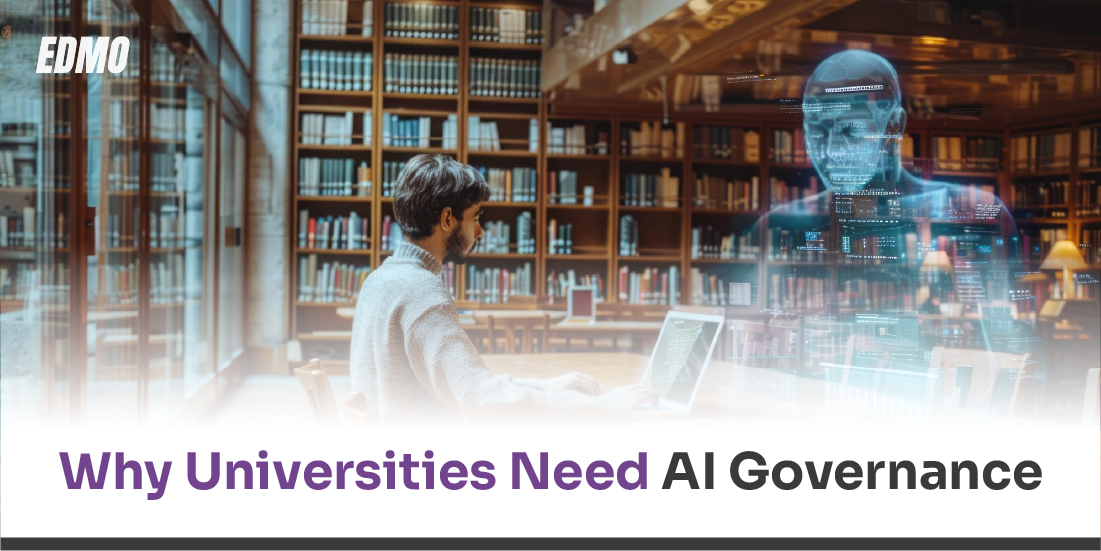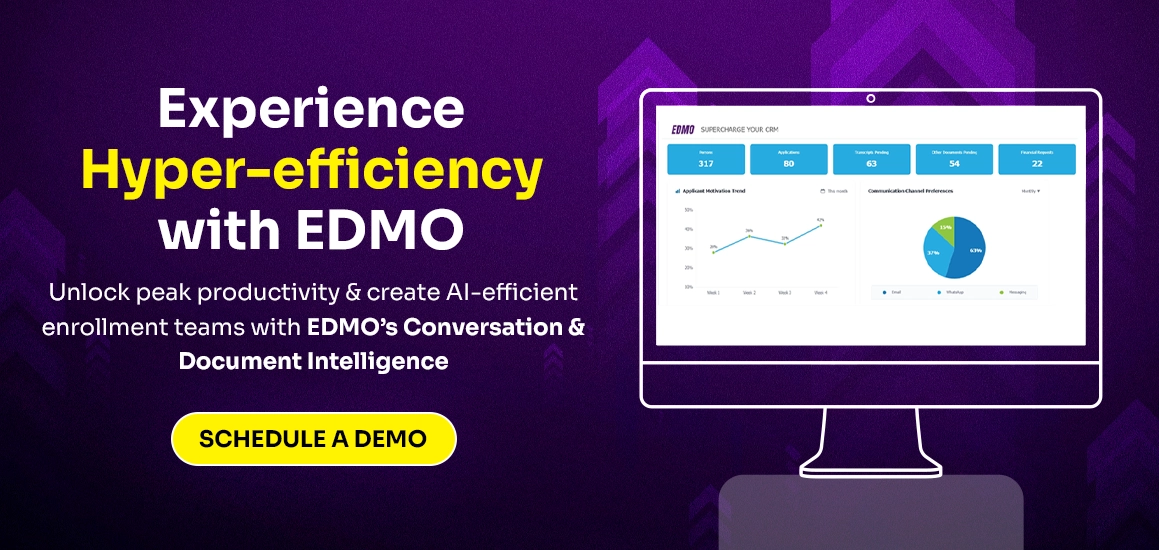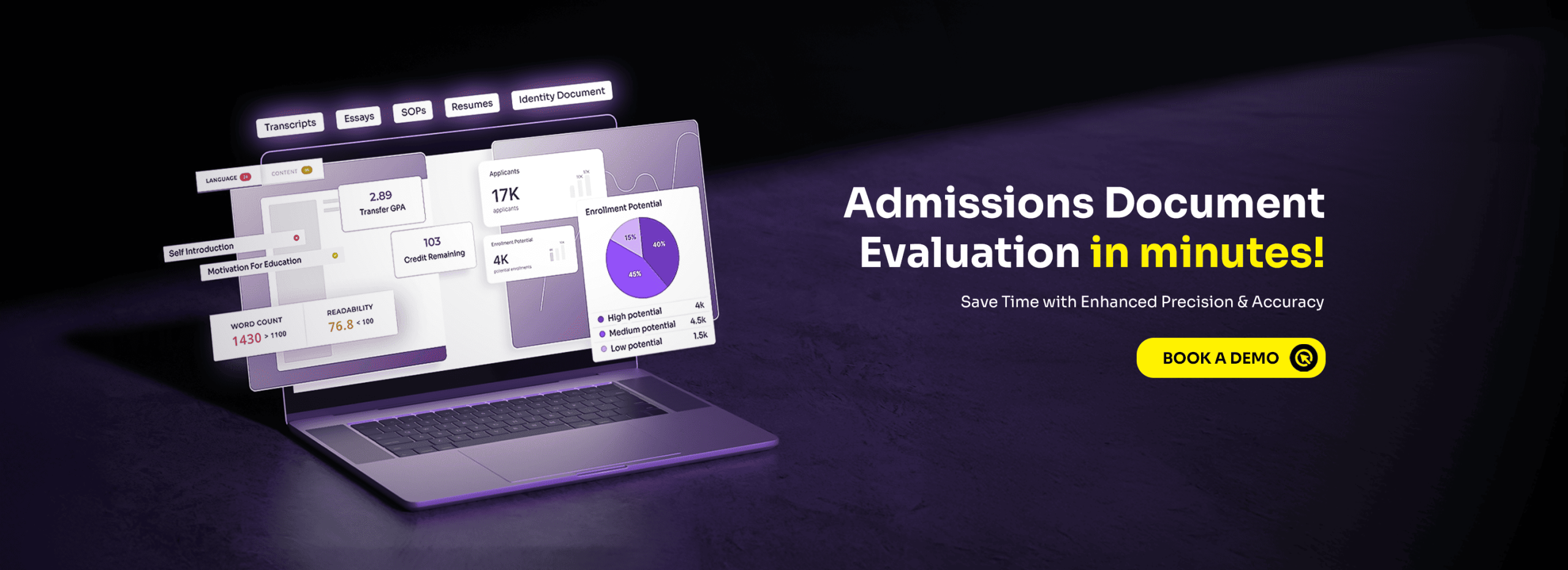Table Of Contents
- 1Introduction
- 2Understanding AI Governance
- 3Why AI Governance Matters
- 4The Promise and Challenge of AI in Higher Education
- 5The Promise of AI
- 6The Challenges of AI
- 7The Leading Components of AI Governance
- 8Implementing an AI Governance Framework: Where to Start
- 9Audit Current AI Usage
- 10Harnessing AI’s Full Potential Ethically and Equitably
- 11Why We Need a Balanced, Two-Tier Approach to AI Governance
- 12Improving AI Governance for Stronger University Compliance and Innovation
- 13Summary
Introduction
In the rising era of artificial intelligence (AI), universities stand at the forefront of innovation—but they also face profound governance challenges. A 2024 report by Inside Higher Ed found that only 20% of universities have or are developing an AI governance framework, revealing alarming institutional unpreparedness. Without robust policies, universities risk severe consequences—from privacy breaches and data bias to threats against academic integrity.
Real-world developments underscore the urgency. Australia’s regulators warn of AI “poisoning” research—through data manipulation, bias, and malicious inputs—prompting institutions like Monash University to ban AI in thesis evaluations. In contrast, others mandate oral thesis defences to preserve academic standards. In India, IIT Delhi launched a governance committee after discovering that 80% of students and 77% of faculty were already using generative AI tools—raising concerns about privacy, access equity, and critical thinking.
Governance isn’t just about risk mitigation—it’s a strategic enabler. Universities like UC San Diego are revamping their data governance to support ethical, effective AI use, while higher education leaders are forming cross-functional AI committees to guide responsible AI adoption across campus. As AI becomes deeply embedded in teaching, learning, and research, robust governance frameworks are not optional—they are essential to safeguard integrity, equity, and institutional credibility.
Understanding AI Governance

AI governance refers to the framework of policies, processes, and ethical guidelines that regulate how artificial intelligence is designed, deployed, and managed within institutions. For universities, this means establishing rules that ensure AI use supports academic integrity, student equity, research credibility, and institutional accountability.
At its core, AI governance addresses three key areas:
- Ethics and Responsibility: Ensuring that AI applications (like admissions algorithms, plagiarism detectors, or learning analytics tools) are free from bias, respect privacy, and uphold fairness.
- Compliance and Risk Management: Aligning AI use with local and international regulations (such as GDPR for data privacy in the EU, or India’s DPDP Act 2023). Governance frameworks help mitigate risks like data breaches, plagiarism, or algorithmic discrimination.
- Transparency and Trust: Making AI-driven decisions explainable to stakeholders—students, faculty, and regulators—so that trust in academic processes is not compromised.
For example, the University of Sydney has introduced strict guidelines on the use of AI in assessments, requiring students to disclose if generative AI was used in assignments. MIT has developed principles for AI research that balance innovation with ethical responsibility.
AI governance is not about restricting technology—it’s about ensuring responsible adoption that safeguards academic values while leveraging AI’s potential to transform education and research.
Why AI Governance Matters
Artificial Intelligence (AI) is no longer a futuristic idea—it’s already part of universities’ daily operations. From automated admissions decisions and AI-powered grading tools to plagiarism detection and student performance tracking, higher education is increasingly shaped by AI. However, without clear governance, universities risk bias, privacy violations, loss of academic integrity, and declining public trust. Governance ensures AI is used responsibly—balancing innovation with accountability.
AI Adoption is Growing Faster Than Oversight
Today, more than 93% of organisations use AI in some form, but only 7% have proper governance frameworks to monitor and control risks. This means most institutions are innovating with AI without guardrails. For universities, this gap could lead to biased admissions algorithms or unfair grading systems.
Academic Integrity is Under Threat
Universities are seeing an explosion in AI-powered cheating. In Scotland, cases of academic misconduct linked to AI jumped by 700% in one year—from 131 to 1,051 cases. If left unregulated, AI could undermine the credibility of degrees and damage a university’s reputation.
Students and Faculty Don’t Fully Trust AI
A global survey found that 54% of people don’t trust AI systems, even though 72% accept their use. In universities, this means students may feel decisions made by AI (such as admissions or grading) are unfair unless governance ensures transparency and accountability.
Legal and Regulatory Pressures Are Rising
Governments worldwide are racing to regulate AI. In 2024 alone, U.S. agencies introduced 59 AI-related rules, more than double the year before. Globally, mentions of AI in legislation increased by 21.3% across 75 countries. Universities must adapt quickly or risk being out of compliance.
AI Governance is a Strategic Advantage
The market for AI governance solutions is booming—valued at $890M in 2024, expected to reach $5.7B by 2029. Universities that adopt governance frameworks early not only avoid risks but also gain a competitive edge by attracting students, faculty, and funding through their commitment to responsible innovation.
The Promise and Challenge of AI in Higher Education
AI in higher education offers personalised learning, efficiency, and research empowerment—but also introduces risks like academic misconduct, bias, privacy issues, and over-reliance without proper governance.
The Promise of AI
Personalised Learning Boosts Outcomes
Adaptive AI systems enhance engagement, motivation, and course completion rates across higher education studies. Additionally, personalised AI tutors using spaced repetition have delivered up to 15 percentile point improvements in exam scores compared to peers without AI assistance.
Widespread Student Adoption & Positive Perception
Surveys show 86% of students actively use AI in their studies, with many leveraging tools like ChatGPT weekly. At a selective U.S. college, over 80% of students used generative AI within just two years of ChatGPT’s introduction—primarily for learning enhancement and feedback.
Efficiency Gains for Educators
Around 60% of teachers integrate AI into everyday teaching tasks. AI-assisted administrative work—like lesson planning, content creation, and research—reduced prep time by 44%.
Growing Market Reflects Demand
The global AI-in-education market is projected at $7.57 billion in 2025, up 46% from 2024, with expected growth to $112 billion by 2034.
The Challenges of AI
Academic Integrity at Risk
The surge in AI use has spurred concerns over plagiarism and reliance on AI-generated content. Among students, worries about academic honesty and deteriorating critical thinking were commonly noted. Recently, 92% of UK students were found to use generative AI—raising alarms over assessment security.
Bias and Data Privacy Concerns
In the Ellucian survey, 49% of respondents flagged worries over bias in AI models, while 59% expressed data security or privacy concerns.
Over-Reliance and Reduced Critical Thinking
While AI provides immediate learning support, critics caution that over-dependence may undermine students’ ability to think critically or solve problems independently.
Equity and Access Barriers
Not all institutions or students benefit equally. Variability in access to AI tools, training, or infrastructure can deepen digital divides—particularly in underserved or resource-constrained contexts.
Environmental Footprint of AI
Training large AI models consumes vast amounts of energy—and thus has a high carbon footprint. For example, training GPT-3 alone generated hundreds of metric tons of CO₂.
The Leading Components of AI Governance

As AI reshapes higher education—from admissions and grading to research and student services—universities face the challenge of balancing innovation with responsibility. AI governance provides the framework to manage risks, ensure fairness, and build trust. Effective governance is not just about compliance; it integrates ethics, transparency, accountability, and security into the lifecycle of AI use. By focusing on core components, universities can safely harness AI’s benefits while protecting academic integrity and institutional credibility.
Ethics & Fairness
AI must uphold equity, inclusivity, and fairness in all academic processes. For example, if an AI tool is used in admissions decisions, it should not unintentionally disadvantage students based on gender, ethnicity, or socio-economic background. Ethical frameworks help prevent algorithmic bias, ensuring AI aligns with university values and social responsibility.
Example: New York University (NYU) has created an AI ethics framework for admissions and student services to ensure fairness.
Transparency & Explainability
Students and faculty need to know how AI makes decisions. If an AI tool flags a student for plagiarism or predicts drop-out risk, it must provide clear reasoning instead of a “black box” verdict. Explainability builds trust and accountability.
Example: The University of Sydney requires students to disclose AI use in assignments, ensuring transparency in academic work.
Accountability & Oversight
Universities must set up AI governance committees or task forces that clearly define who is responsible for monitoring AI risks. Accountability ensures that when an AI error occurs—like rejecting qualified students or mis-grading papers—there are mechanisms for human review and correction.
Example: IIT Delhi formed an AI governance committee after finding that over 75% of faculty and 80% of students were already using AI in academic tasks.
Data Privacy & Security
AI relies heavily on student data (grades, personal information, behavioral data). Without strict privacy policies, universities risk data breaches or misuse. Governance must comply with local and global laws like GDPR (Europe) or India’s DPDP Act 2023. Universities should also define how long data is stored and how it’s anonymized.
Example: UC San Diego revamped its data governance policies to ensure AI use respects student privacy.
Compliance with Regulations
Governments are rapidly rolling out AI-specific regulations such as the EU AI Act, which categorizes educational AI tools (like grading systems) as “high-risk.” Universities must adapt to these laws or risk fines, reputational damage, and loss of accreditation.
Example: European universities are already aligning AI tools with EU AI Act requirements to stay compliant.
Bias Detection & Mitigation
AI systems learn from historical data, which may contain biases. Without governance, AI may reinforce inequalities (e.g., assuming students from certain regions perform poorly). Institutions must perform bias audits, test AI on diverse datasets, and adjust models regularly.
Example: MIT researchers emphasize bias testing in AI projects before deployment in education.
Sustainability & Resource Management
Training and running AI models consumes massive amounts of energy. For instance, training GPT-3 generated hundreds of metric tons of CO₂. Universities need policies for green AI adoption, like optimizing cloud resources, using energy-efficient models, and reporting carbon footprints.
Example: Stanford researchers advocate for sustainable AI frameworks in higher education research.
Education & Awareness
AI governance isn’t only about tools—it’s about culture and awareness. Universities must train students, staff, and faculty to use AI responsibly, disclose usage, and understand limitations. Clear AI literacy programs help reduce misuse and promote innovation.
Example: Harvard offers workshops to teach students how to responsibly use generative AI in coursework.
Implementing an AI Governance Framework: Where to Start
As universities increasingly adopt AI for admissions, grading, research, and student engagement, the need for a structured AI governance framework becomes urgent. But governance cannot be built overnight—it requires a phased approach that balances innovation with accountability. Starting small, aligning with regulations, and involving stakeholders are critical to long-term success.
Form an AI Governance Committee
- Create a cross-functional team with faculty, IT leaders, ethics experts, legal advisors, and student representatives.
- This ensures diverse perspectives on fairness, compliance, and practical implementation.
- Example: IIT Delhi set up an AI task force after finding that 80% of students already used generative AI tools.
Audit Current AI Usage
- Conduct a baseline assessment of where AI is already being used: admissions, plagiarism detection, research, or administrative automation.
- Identify risks, benefits, and gaps in oversight.
- Stat: A survey found 86% of students already use AI in their studies, often without formal guidelines (Campus Technology).
Develop Ethical Principles & Policies
- Define clear principles: fairness, transparency, accountability, privacy, and sustainability.
- Draft policies on acceptable AI use in coursework, research, and administration.
- Example: The University of Sydney requires students to disclose AI use in assignments to protect academic integrity.
Ensure Data Governance & Compliance
- Align policies with local and global regulations (e.g., GDPR, DPDP Act 2023, EU AI Act).
- Establish strong rules for data collection, anonymization, storage, and sharing.
- Example: UC San Diego revamped its data governance to integrate AI responsibly in student services.
Create Oversight & Accountability Mechanisms
- Define who is responsible for monitoring AI systems and resolving disputes when errors occur (e.g., a wrongly flagged plagiarism case).
- Build feedback loops where students and faculty can challenge AI-driven decisions.
Invest in Training & AI Literacy
- Conduct AI literacy workshops for students and faculty on responsible usage.
- Train staff in detecting misuse and managing AI-driven workflows.
- Stat: Over 49% of faculty express concerns about AI bias, highlighting the need for training (Campbell University).
Start with Pilot Programs
- Instead of deploying AI across all departments, begin with controlled pilots—such as AI-driven credit transfer evaluation or student support chatbots.
- Use feedback to refine governance policies before scaling.
Monitor, Audit, and Evolve
- Governance is not “set and forget.” Perform regular AI audits to detect bias, errors, or policy violations.
- Adjust governance frameworks as AI regulations and technologies evolve.
Harnessing AI’s Full Potential Ethically and Equitably
AI governance is essential to ensure that artificial intelligence is developed and deployed in ways that serve the public good rather than compromise it. Strong governance frameworks help universities and institutions address critical risks—such as bias, misinformation, and academic misconduct—while promoting accountability, privacy protection, transparency, and innovation.
- By striking this balance, AI can be integrated responsibly into education and society with minimal unintended consequences.
- As higher education navigates this transformative era, thoughtful and inclusive governance will be the cornerstone of AI adoption.
- It requires collaboration among faculty, administrators, students, policymakers, and technology leaders to ensure that AI tools are not only powerful but also ethical, equitable, and sustainable.
- Ultimately, harnessing AI’s full potential is a collective responsibility. When guided by robust governance, AI can strengthen academic integrity, democratize access to learning, and empower research breakthroughs—shaping a future where this technology truly serves the greater good.
Why We Need a Balanced, Two-Tier Approach to AI Governance
AI is now everywhere in higher education—from chatbots helping students write essays to algorithms deciding admissions. A two-tier governance model ensures light rules for everyday tools and stronger oversight for high-risk systems, balancing innovation and safety.
- 86% of students already use AI tools in their studies, often without guidelines.
- 92% of UK students reported using AI for coursework, sparking academic integrity concerns.
- Only 7% of organisations worldwide have fully implemented AI governance frameworks, showing how unprepared institutions still are.
- The EU AI Act (2024) already enforces stricter rules for high-risk AI (like education and healthcare), proving the value of risk-tiered governance (European Commission).
Not All AI Carries the Same Risk
Everyday tools like ChatGPT for brainstorming or AI for scheduling classes are generally low-risk.
- But AI systems that decide admissions, grading, or financial aid carry much higher stakes—they can unfairly affect student futures if not governed properly.
- That’s why we need two levels of governance: one for low-risk tools (lighter oversight) and one for high-risk systems (stricter checks).
Encourages Innovation Without Fear
If universities put heavy restrictions on all AI, students and faculty might stop experimenting with useful tools.
- A two-tier model allows flexibility: teachers and students can explore low-risk AI freely, while high-risk uses undergo strong monitoring.
- This way, institutions stay innovative without compromising ethics.
Matches Global Governance Trends
The EU AI Act already categorises AI into risk levels (minimal, limited, high, and unacceptable).
- For example: chatbots = limited risk vs. admissions algorithms = high risk.
- Universities following a similar two-tier model stay aligned with global regulatory frameworks.
Ensures Fairness and Accountability Where It Matters Most
An AI chatbot making grammar corrections has little impact on equity.
- But an AI that rejects an applicant or predicts drop-outs must be transparent and accountable.
- With a two-tier approach, institutions can focus on strong governance where harm could be most severe.
Allows Quick Response to New Risks
- AI evolves very fast—new risks appear almost overnight.
- A two-tier model gives universities agility:
Low-risk tier: quick adoption, minimal rules.
High-risk tier: strict audits, bias checks, compliance reviews.
- This adaptive system prevents institutions from falling behind while staying safe.
Improving AI Governance for Stronger University Compliance and Innovation
Improving AI governance helps universities balance compliance with regulations and innovation in education. With structured oversight, institutions can protect integrity, build trust, and responsibly adopt AI for transformative teaching, research, and administration.
Establish Clear Policies and Frameworks
AI in higher education touches everything from admissions to classroom learning. Without clear policies, students and faculty may misuse tools or distrust AI-driven outcomes.
- Universities should create institution-wide AI governance frameworks that define what is acceptable, what requires disclosure, and what is prohibited.
- Policies should cover academic integrity, ethical AI use, data handling, and transparency.
- Example: The University of Sydney introduced rules requiring students to disclose whether AI was used in assignments. This balances innovation with integrity by ensuring AI aids learning rather than replacing it.
Strengthen Regulatory Compliance
Universities operate within a complex legal environment where student data, admissions decisions, and research are sensitive areas.
- Compliance means aligning with international laws and standards like the EU AI Act (which classifies educational AI as high-risk), GDPR (Europe’s data protection law), and India’s DPDP Act 2023.
- Strong compliance ensures universities avoid fines, protect student data, and maintain credibility with regulators, partners, and students.
- Example: European universities are already auditing their AI tools to make sure they comply with the EU AI Act, especially in grading and admissions systems.
Implement Bias Audits and Human Oversight
AI systems learn from historical data, which may carry biases. Without oversight, AI might unfairly disadvantage certain groups in admissions, grading, or financial aid.
- Regular bias audits check algorithms for fairness, transparency, and unintended discrimination.
- Human oversight is essential—AI recommendations in high-stakes areas (like student progression) should always be reviewed by qualified staff.
- Example: Some U.S. universities use AI in admissions but keep final decision-making with human committees, ensuring accountability.
Invest in AI Literacy and Training
AI governance is not just technical—it’s cultural. Faculty and students must understand AI’s potential and its risks.
- Training helps educators design fair assessments, students use AI responsibly, and administrators enforce policies effectively.
- A 2025 Campbell University survey found 49% of faculty worry about AI bias, and 59% worry about data privacy—showing the need for proper training.
- Example: Harvard runs workshops for students on how to responsibly use generative AI in research and writing, teaching them when to disclose and when not to rely on it.
Encourage Responsible Innovation with Pilots
AI governance shouldn’t stifle innovation—it should guide safe experimentation.
- Instead of banning AI or rolling it out campus-wide immediately, universities should start with controlled pilot programs.
- Pilots could include AI-powered student chatbots, credit transfer evaluation, or early-warning systems for at-risk students.
- Feedback from pilots can improve governance policies before scaling across the institution.
- Example: IIT Delhi set up an AI governance committee and is running pilots to see how generative AI can support faculty and student learning while addressing ethical risks.
Summary
Artificial intelligence is rapidly reshaping higher education, but universities remain underprepared for its governance. While AI enhances learning, research, and efficiency, its unchecked use risks academic integrity, bias, privacy breaches, and declining trust. Reports show that only 20% of universities have AI governance frameworks, and global cases of AI-related misconduct and regulatory pressures are rising. Student adoption is widespread—over 80% already use generative AI—while faculty express strong concerns about fairness and data security. Institutions worldwide are responding with measures such as banning AI in thesis evaluations, mandating oral defences, or creating AI task forces. Governance frameworks focus on ethics, compliance, transparency, bias mitigation, sustainability, and AI literacy. A two-tier approach—light oversight for low-risk tools, strict controls for high-risk systems—offers balance. Universities that act now not only avoid risks but also gain credibility and a competitive advantage. Ultimately, AI governance is essential to safeguard academic values while fostering responsible innovation.










No comments yet. Be the first to comment!
Leave a Comment